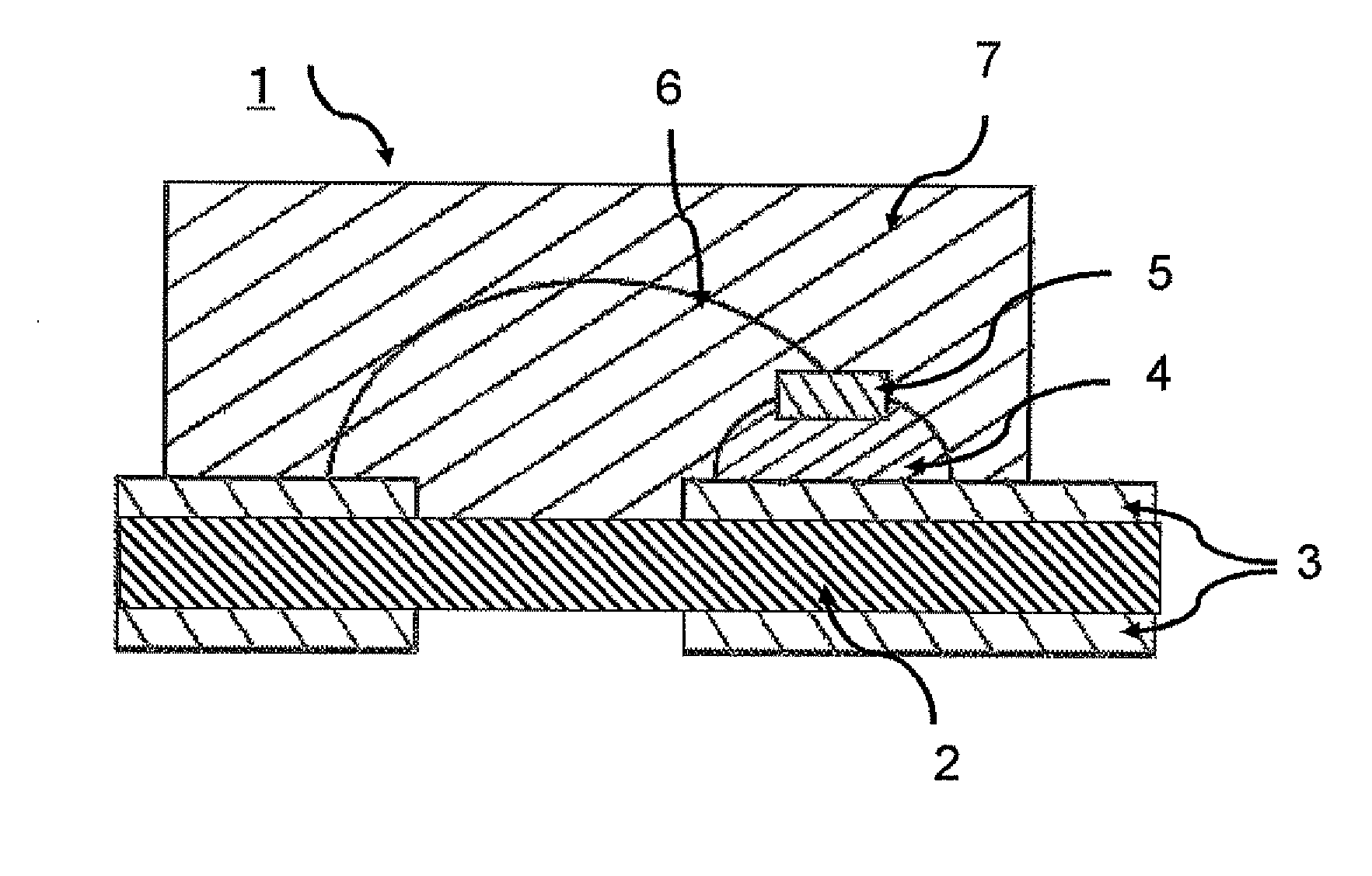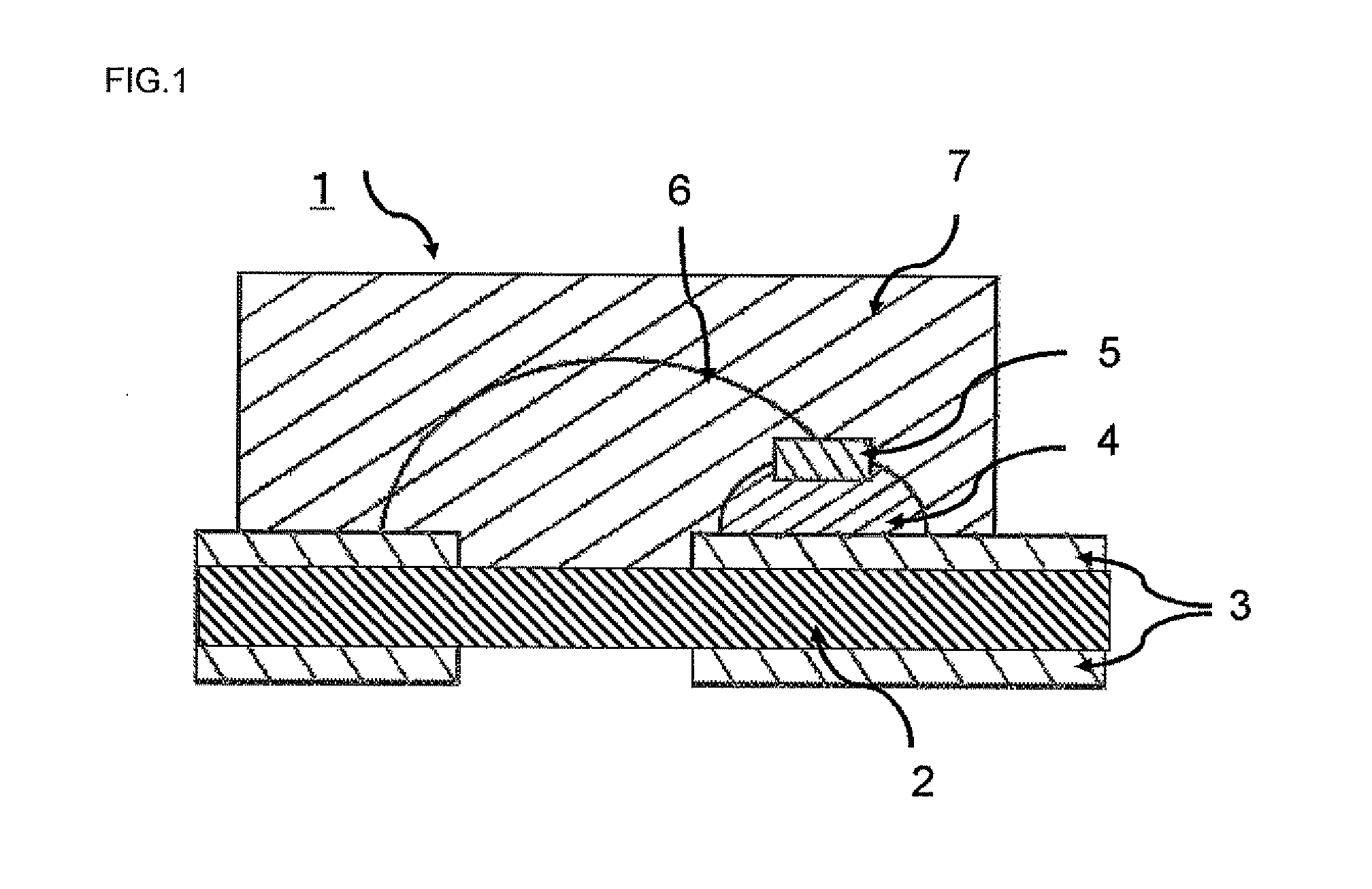Silicone resin composition, silicone laminated substrate using the same, method for producing the same, and LED device
a technology of silicone laminated substrate and silicone resin, which is applied in the direction of solid balls, weaving, transportation and packaging, etc., can solve the problems of reduced fluidity, increased luminance, and deterioration of the mounting substrate, and achieve excellent properties such as heat resistance and weatherability, and high glass transition temperature
- Summary
- Abstract
- Description
- Claims
- Application Information
AI Technical Summary
Benefits of technology
Problems solved by technology
Method used
Image
Examples
synthetic example 1
An Organopolysiloxane Resin Containing a Vinyl Group (A1)
[0110]After organosilanes represented by PhSiCl3 (562.1 g, 90 mole %) and ViSiCl3 (47.8 g, 10 mole %) were dissolved into a toluene solvent, added dropwise into water, subjected to co-hydrolysis, washed with water and alkaline for neutralization and dehydrated, the solvent was stripped to synthesize a resin with a 3-dimensional network structure containing a vinyl group composed of a T unit (A1). The weight average molecular weight of the resin was 4000, and the amount of vinyl group content was 0.08 mole / 100 g.
synthetic example 2
An Organopolysiloxane Resin Containing a Vinyl Group (A2)
[0111]After organosilanes represented by PhSiCl3 (499.6 g, 80 mole %) and ViSiCl3 (95.6 g, 20 mole %) were dissolved into a toluene solvent, added dropwise into water, subjected to co-hydrolysis, washed with water and alkaline for neutralization and dehydrated, the solvent was stripped to synthesize a resin with a 3-dimensional network structure containing a vinyl group composed of a T unit (A2). The weight average molecular weight of the resin was 4200, and the amount of vinyl group content was 0.14 mole / 100 g.
synthetic example 3
An Organohydrogenpolysiloxane Resin Containing a Hydrosilyl Group (B1)
[0112]After organosilanes represented by PhSiCl3 (666.8 g, 81.8 mole %), ClMe2SiO(Me2SiO)8SiMe2Cl (278.6 g, 9.1 mole %) and MeHSiCl2 (40.3 g, 9.1 mole %) into a toluene solvent, added dropwise into water, subjected to co-hydrolysis, washed with water and alkaline for neutralization and dehydrated, the solvent was stripped to synthesize a resin containing a hydrosilyl group (B1). The weight average molecular weight of the resin was 11000, and the amount of hydrosilyl group content was 0.05 mole / 100 g.
PUM
| Property | Measurement | Unit |
|---|---|---|
| molar ratio | aaaaa | aaaaa |
| molar ratio | aaaaa | aaaaa |
| molar ratio | aaaaa | aaaaa |
Abstract
Description
Claims
Application Information
 Login to View More
Login to View More - R&D
- Intellectual Property
- Life Sciences
- Materials
- Tech Scout
- Unparalleled Data Quality
- Higher Quality Content
- 60% Fewer Hallucinations
Browse by: Latest US Patents, China's latest patents, Technical Efficacy Thesaurus, Application Domain, Technology Topic, Popular Technical Reports.
© 2025 PatSnap. All rights reserved.Legal|Privacy policy|Modern Slavery Act Transparency Statement|Sitemap|About US| Contact US: help@patsnap.com



